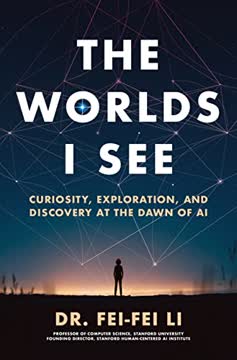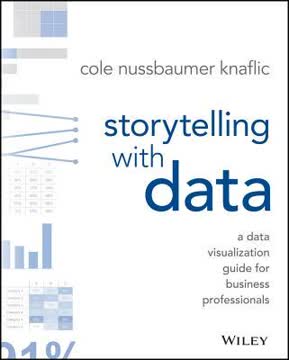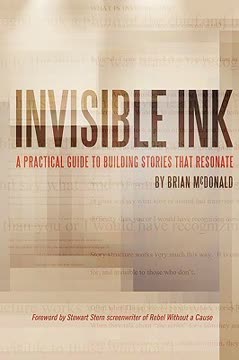Key Takeaways
1. Invisible Ink: The Hidden Elements of Storytelling
Invisible ink is the writing below the surface of the words. Most people will never see or notice it, but they will feel it.
The power of subtlety. Invisible ink refers to the underlying structure and techniques that make a story compelling without being overtly noticeable. It's the foundation that supports the visible elements of a story, like dialogue and action.
Impact on the audience. While readers or viewers may not consciously recognize these hidden elements, they significantly impact their emotional engagement and understanding of the story. Mastering invisible ink allows storytellers to create works that resonate deeply with their audience.
Examples of invisible ink:
- Character arcs
- Theme development
- Foreshadowing
- Subtext in dialogue
- Symbolic imagery
2. The Armature: Building Your Story's Foundation
Your armature is the foundation that holds up your story Everything hangs on top of it. Every decision you make should be based on the idea of dramatizing your armature idea.
Defining the armature. The armature is the central theme or message of your story. It's the core idea that you want to convey to your audience, serving as the backbone of your narrative.
Implementing the armature. Every element of your story should support and reinforce this central theme. Characters, plot points, and dialogue should all work together to illuminate your armature.
Examples of effective armatures:
- "Love conquers all" in Romeo and Juliet
- "Absolute power corrupts absolutely" in Animal Farm
- "The importance of family" in The Godfather
3. Ritual Pain: Transforming Characters Through Conflict
Apply enough pressure and heat to change a lump of coal into a diamond.
The necessity of conflict. Characters must face significant challenges and pain to grow and change. This "ritual pain" is essential for meaningful character development and engaging storytelling.
Types of ritual pain:
- Physical challenges
- Emotional turmoil
- Moral dilemmas
- Loss and sacrifice
Impact on character arc. By overcoming these obstacles, characters demonstrate growth and transformation, making their journey more compelling and relatable to the audience.
4. Telling the Truth: The Power of Authenticity in Fiction
The truth will always be sadder, happier, funnier, scarier, and more profound than the best lie.
Emotional resonance. Authentic storytelling, even in fictional settings, creates a stronger emotional connection with the audience. It taps into universal human experiences and emotions.
Avoiding clichés and stereotypes. Truth in storytelling means moving beyond predictable tropes and exploring the complexities of human nature and real-world situations.
Examples of truthful storytelling:
- Nuanced character motivations
- Realistic consequences for actions
- Honest portrayal of relationships and conflicts
5. Balancing Masculine and Feminine Elements in Storytelling
Things that affect a character physically are masculine and are visible ink. How he feels about them is feminine and invisible.
Defining masculine and feminine elements:
- Masculine: External actions, plot-driven events
- Feminine: Internal emotions, character development
Creating balance. A well-crafted story combines both masculine and feminine elements to create a rich, multidimensional narrative that appeals to a broad audience.
Impact on storytelling:
- Engaging both logic and emotion
- Creating well-rounded characters
- Appealing to diverse audience preferences
6. Superior Position: Engaging the Audience Through Knowledge
Superior position is when the audience knows something that the characters do not know.
Creating tension. Superior position allows the audience to anticipate events, creating suspense and emotional investment in the story.
Types of superior position:
- Dramatic irony
- Foreshadowing
- Multiple perspective narratives
Enhancing audience engagement. By giving the audience information that characters lack, storytellers can create a sense of involvement and anticipation that keeps viewers or readers invested in the narrative.
7. Dialogue: More Than Just Words on a Page
Dialogue is a tool, and just like any tool, you use it when you need it. It can be used to define your armature, give essential plot information, or reveal character. If it isn't doing that it isn't doing anything.
Purpose of dialogue. Effective dialogue serves multiple functions in storytelling, beyond simply conveying information between characters.
Key functions of dialogue:
- Revealing character traits and motivations
- Advancing the plot
- Reinforcing the story's theme
- Creating subtext and tension
Natural vs. stylized dialogue. While dialogue should sound natural, it should also be more purposeful and concise than real-life conversation, always serving the story's needs.
8. The Myth of Genre: Transcending Categories for Better Storytelling
Genre is irrelevant to the dramatist. A dramatist should only be concerned with drama.
Limitations of genre. Focusing too heavily on genre conventions can restrict creativity and lead to formulaic storytelling.
Universal storytelling principles. Great stories often transcend genre boundaries by focusing on universal themes and compelling character arcs.
Adapting across genres:
- Reimagining classic stories in new settings
- Combining elements from multiple genres
- Focusing on character and theme over genre tropes
9. Climax: The Culmination of Character Growth
A climax is the bringing together of the masculine and feminine elements that shows the character's change, or lack thereof.
Purpose of the climax. The climax serves as the ultimate test of a character's growth and transformation throughout the story.
Elements of an effective climax:
- High stakes situation
- Character's crucial decision
- Demonstration of change (or failure to change)
- Resolution of internal and external conflicts
Impact on the audience. A well-crafted climax provides emotional catharsis and a satisfying conclusion to the character's journey.
10. Crafting Supporting Plots to Reinforce Your Main Message
Everything should hang off the same armature.
Purpose of supporting plots. Rather than being separate "subplots," supporting plots should directly reinforce and illuminate the main story's theme and central message.
Integrating supporting plots:
- Parallel character arcs that reflect the protagonist's journey
- Exploring different facets of the main theme
- Providing contrast or complementary perspectives
Avoiding distractions. Supporting plots should enhance the main narrative, not detract from it or feel disconnected from the core story.
Last updated:
FAQ
What's "Invisible Ink: A Practical Guide to Building Stories That Resonate" about?
- Story Structure Focus: The book delves into the concept of "invisible ink," which refers to the underlying structure and elements of storytelling that aren't immediately visible but are crucial for a story's success.
- Author's Expertise: Written by Brian McDonald, an award-winning screenwriter, the book offers insights from his experience teaching story seminars at major studios like Pixar and Disney.
- Practical Guide: It provides practical tools and techniques for writers to create compelling stories and for readers to understand the art of storytelling.
- Examples and Analysis: The book uses examples from popular movies and scripts to illustrate its points, making it accessible and relatable.
Why should I read "Invisible Ink" by Brian McDonald?
- Enhance Storytelling Skills: Whether you're a writer or a reader, the book offers valuable insights into the essential elements of storytelling that can improve your understanding and craft.
- Unique Perspective: It introduces the concept of "invisible ink," focusing on the unseen elements that make stories resonate with audiences.
- Expert Advice: Learn from Brian McDonald's extensive experience in the industry, including his work with major studios and his award-winning projects.
- Practical Application: The book provides actionable techniques and exercises that can be directly applied to your writing projects.
What are the key takeaways of "Invisible Ink"?
- Invisible Ink Concept: Understanding the importance of the underlying structure in storytelling, which is often more impactful than the visible elements like dialogue.
- Story Structure: The book emphasizes the significance of a well-structured story, using the "seven easy steps" framework to guide narrative development.
- Character Development: It highlights the importance of creating characters that undergo meaningful change, often through "ritual pain" or personal challenges.
- Theme and Armature: The book stresses the need for a strong theme or "armature" that supports the entire story, ensuring all elements contribute to the central message.
What are the "seven easy steps" to a better story according to Brian McDonald?
- Once upon a time: Establish the setting and introduce the main characters, setting the stage for the story.
- And every day: Show the normal world and routine of the characters, creating a baseline for the narrative.
- Until one day: Introduce the inciting incident that disrupts the normal world and propels the story forward.
- And because of this: Detail the consequences and reactions to the inciting incident, driving the plot.
- Until finally: Lead to the climax where the main conflict reaches its peak and is resolved.
- And ever since that day: Provide a denouement that shows the new normal and the impact of the story's events.
How does Brian McDonald define "Invisible Ink"?
- Below the Surface: "Invisible ink" refers to the elements of storytelling that are not immediately visible but are crucial for the story's success.
- Story Structure: It includes the order of events, character motivations, and thematic elements that support the narrative.
- Impact on Audience: These elements are felt by the audience, even if they are not consciously noticed, making the story resonate more deeply.
- Foundation of Storytelling: Invisible ink is the foundation upon which the visible elements, like dialogue and action, are built.
What is the "armature" in storytelling according to "Invisible Ink"?
- Core Idea: The armature is the central idea or theme that the story is built around, similar to the moral of a fable.
- Structural Integrity: It acts as the skeleton of the story, providing structural integrity and ensuring all elements support the central message.
- Guiding Principle: The armature guides the storyteller's decisions, helping to maintain focus and coherence throughout the narrative.
- Dramatization: The book emphasizes the importance of dramatizing the armature, making it an integral part of the story rather than an overt message.
What role does "ritual pain" play in character development in "Invisible Ink"?
- Transformation Tool: Ritual pain is a narrative device used to transform characters, often through significant challenges or personal hells.
- Character Growth: It forces characters to confront their flaws and undergo meaningful change, making them more relatable and compelling.
- Story Impact: The pain and struggle experienced by characters enhance the story's emotional depth and resonance with the audience.
- Universal Element: Ritual pain is a common element in storytelling across cultures, symbolizing the journey from one state of being to another.
How does "Invisible Ink" address the balance between masculine and feminine elements in storytelling?
- Masculine Elements: These are external, plot-driven aspects of a story, such as action and events that move the narrative forward.
- Feminine Elements: These are internal, character-driven aspects, focusing on emotions, relationships, and personal growth.
- Balance for Resonance: The book argues that a balance between these elements creates a more truthful and resonant story.
- Universal Appeal: By incorporating both elements, storytellers can appeal to a broader audience and create more impactful narratives.
What are some of the best quotes from "Invisible Ink" and what do they mean?
- "There is no art which does not conceal a still greater art." This quote emphasizes the importance of the unseen elements in storytelling that contribute to its overall impact.
- "A wise man speaks because he has something to say; a fool because he has to say something." It highlights the importance of having a clear purpose or message in storytelling.
- "Everybody wants to go to heaven, but nobody wants to die." This reflects the resistance to change and the necessity of ritual pain for character growth.
- "Don't give me logic, give me emotion." It underscores the importance of emotional truth over factual accuracy in storytelling.
How does Brian McDonald suggest using "superior position" in storytelling?
- Audience Knowledge: Superior position involves giving the audience information that the characters do not have, creating suspense or humor.
- Engagement Tool: It engages the audience by making them active participants in the story, as they anticipate the characters' reactions.
- Suspense Creation: This technique is often used to build suspense, as the audience knows something significant is about to happen.
- Humor and Irony: It can also be used for comedic effect, as the audience is in on a joke that the characters are unaware of.
What are some common mistakes in storytelling that "Invisible Ink" highlights?
- Ignoring Structure: Overlooking the importance of a well-structured story can lead to a lack of coherence and impact.
- Lack of Theme: Failing to establish a strong armature or theme can result in a story that feels aimless or shallow.
- Character Stagnation: Characters that do not undergo meaningful change or face ritual pain can seem flat and unengaging.
- Overemphasis on Dialogue: Focusing too much on dialogue without considering the underlying story elements can weaken the narrative.
How can "Invisible Ink" help improve your storytelling skills?
- Understanding Structure: The book provides a clear framework for constructing well-structured stories that resonate with audiences.
- Character Development: It offers insights into creating compelling characters that undergo meaningful change through ritual pain.
- Theme Integration: Learn to integrate a strong theme or armature into your story, ensuring all elements support the central message.
- Practical Techniques: The book includes practical exercises and examples that can be directly applied to your writing projects.
Review Summary
Invisible Ink receives mostly positive reviews, praised for its insights on storytelling structure and theme. Readers find it concise, practical, and applicable across various mediums. Many appreciate McDonald's focus on "invisible" elements like armature and character development. Critics note its simplicity and lack of depth on certain topics. The gender-related content in one chapter is controversial. Overall, it's viewed as a valuable resource for both novice and experienced writers, offering a fresh perspective on crafting compelling narratives.
Similar Books










Download PDF
Download EPUB
.epub digital book format is ideal for reading ebooks on phones, tablets, and e-readers.




